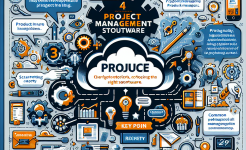Understanding Agile Development
Agile development is a methodology that emphasizes iterative progress, collaboration, and customer feedback. Unlike the Waterfall model, which follows a linear sequence of phases, Agile breaks projects into smaller, manageable increments called sprints. Each sprint typically lasts two to four weeks and involves planning, execution, review, and adaptation. This iterative approach allows teams to deliver functional components of the product incrementally, ensuring that the end result aligns with customer needs. By focusing on continuous improvement, Agile enables teams to identify and address issues early, reducing the risk of costly delays.
One of the core principles of Agile is fostering collaboration among cross-functional teams. Unlike traditional hierarchical structures, Agile encourages self-organizing teams where members collectively take ownership of tasks and decisions. This approach not only enhances communication but also empowers team members to contribute their unique expertise, leading to more innovative solutions. Additionally, Agile promotes transparency by making project progress visible to all stakeholders, which helps build trust and ensures alignment with organizational goals. Through regular stand-up meetings, retrospectives, and sprint reviews, teams can continuously refine their processes and improve efficiency.
Another critical aspect of Agile development is its emphasis on adaptability. In a rapidly changing market, businesses must be able to pivot quickly to meet new demands. Agile provides the framework for teams to respond to change effectively without derailing the project. By prioritizing tasks based on value and urgency, teams can focus on delivering the most impactful features first. This flexibility not only reduces waste but also ensures that the final product meets customer expectations. By embracing Agile principles, teams can achieve greater efficiency and deliver higher-quality outcomes.
Key Strategies to Enhance Team Efficiency
One of the most effective strategies for improving team efficiency through Agile is implementing Scrum, a popular Agile framework. Scrum provides a structured yet flexible approach to project management, enabling teams to work collaboratively and deliver results incrementally. The Scrum framework includes roles such as the Product Owner, Scrum Master, and Development Team, each with distinct responsibilities that contribute to the project’s success. The Product Owner prioritizes the product backlog, ensuring that the team works on the most valuable tasks first. The Scrum Master facilitates the process, removing obstacles and fostering a productive environment. The Development Team, on the other hand, focuses on delivering high-quality work within each sprint. By clearly defining roles and responsibilities, Scrum minimizes confusion and maximizes efficiency.
Another strategy is to leverage continuous integration and continuous delivery (CI/CD) practices. CI/CD involves automating the process of integrating code changes and deploying them to production, reducing the time and effort required for manual testing and deployment. By implementing CI/CD pipelines, teams can identify and resolve issues early, ensuring that the product remains stable and functional throughout the development cycle. This not only accelerates the delivery process but also improves the overall quality of the product. Furthermore, CI/CD encourages a culture of collaboration, as developers, testers, and operations teams work together to ensure seamless integration and deployment.
Regular retrospectives are also essential for enhancing team efficiency. Retrospectives are meetings held at the end of each sprint where the team reflects on what went well, what didn’t, and how they can improve. These sessions provide valuable insights into the team’s strengths and weaknesses, enabling them to refine their processes and address any bottlenecks. By fostering a culture of continuous improvement, retrospectives help teams become more efficient over time. Additionally, retrospectives promote open communication and trust, as team members are encouraged to share their perspectives and collaborate on solutions. This not only enhances team dynamics but also drives better results.
Building a Collaborative and Empowered Team
Creating a collaborative environment is fundamental to improving team efficiency through Agile development. Collaboration goes beyond simply working together; it involves fostering a culture where team members feel valued, heard, and empowered to contribute. Agile emphasizes the importance of cross-functional teams, where individuals with diverse skill sets collaborate to achieve common goals. This diversity not only enriches the team’s problem-solving capabilities but also ensures that all aspects of the project are addressed comprehensively. By encouraging open communication and knowledge sharing, teams can leverage each other’s strengths and overcome challenges more effectively.

Empowerment is another critical factor in building an efficient Agile team. Agile principles emphasize self-organization, where team members take ownership of their tasks and make decisions collectively. This autonomy not only boosts morale but also enhances accountability, as individuals are responsible for delivering on their commitments. To foster empowerment, leaders should provide the necessary resources, guidance, and support while avoiding micromanagement. Trusting the team to make decisions and solve problems independently encourages innovation and creativity, leading to more efficient and effective outcomes. Additionally, empowering team members to take initiative and experiment with new ideas can drive continuous improvement and adaptability.
Finally, fostering a culture of psychological safety is essential for building a collaborative and empowered team. Psychological safety refers to an environment where team members feel comfortable expressing their opinions, asking questions, and admitting mistakes without fear of judgment or retribution. This openness is crucial for Agile teams, as it enables honest feedback, constructive criticism, and continuous learning. Leaders can promote psychological safety by modeling vulnerability, encouraging diverse perspectives, and celebrating both successes and failures as learning opportunities. When team members feel safe to take risks and share their ideas, they are more likely to collaborate effectively and contribute to the team’s success.
Conclusion
Agile development offers a powerful framework for improving team efficiency by fostering collaboration, adaptability, and continuous improvement. By breaking projects into manageable sprints, leveraging cross-functional teams, and prioritizing customer feedback, Agile enables teams to deliver high-quality results more efficiently. Key strategies such as implementing Scrum, adopting CI/CD practices, and conducting regular retrospectives further enhance productivity and drive better outcomes. Additionally, building a collaborative and empowered team through open communication, autonomy, and psychological safety is essential for sustaining high performance.
As organizations continue to navigate an increasingly complex and dynamic business landscape, embracing Agile development is no longer optional but imperative. The principles and practices of Agile not only streamline project management but also cultivate a culture of innovation and resilience. By investing in Agile training, tools, and processes, businesses can unlock the full potential of their teams and achieve long-term success. Ultimately, the journey to improving team efficiency through Agile is ongoing, requiring commitment, adaptability, and a shared vision of excellence.
FAQ
1.How does Agile development differ from traditional project management?
Agile development differs from traditional project management in its iterative and flexible approach. Unlike the linear Waterfall model, Agile breaks projects into smaller sprints, allowing teams to deliver incremental results and adapt to changing requirements. Agile also emphasizes collaboration, continuous feedback, and self-organizing teams, whereas traditional methods often rely on rigid structures and top-down decision-making.
2.What are the key roles in a Scrum team?
A Scrum team typically consists of three key roles: the Product Owner, Scrum Master, and Development Team. The Product Owner is responsible for prioritizing the product backlog and ensuring that the team delivers maximum value. The Scrum Master facilitates the process, removes obstacles, and ensures adherence to Agile principles. The Development Team focuses on delivering high-quality work within each sprint, collaborating to achieve the project goals.
3.How can psychological safety improve team efficiency?
Psychological safety creates an environment where team members feel comfortable expressing their ideas, asking questions, and admitting mistakes without fear of judgment. This openness fosters honest communication, constructive feedback, and continuous learning, which are essential for Agile teams. When team members feel safe to take risks and share their perspectives, they collaborate more effectively, leading to improved efficiency and innovation.
ARTICLE TITLE :How to improve team efficiency through agile development ,AUTHOR :ITpmlib

















